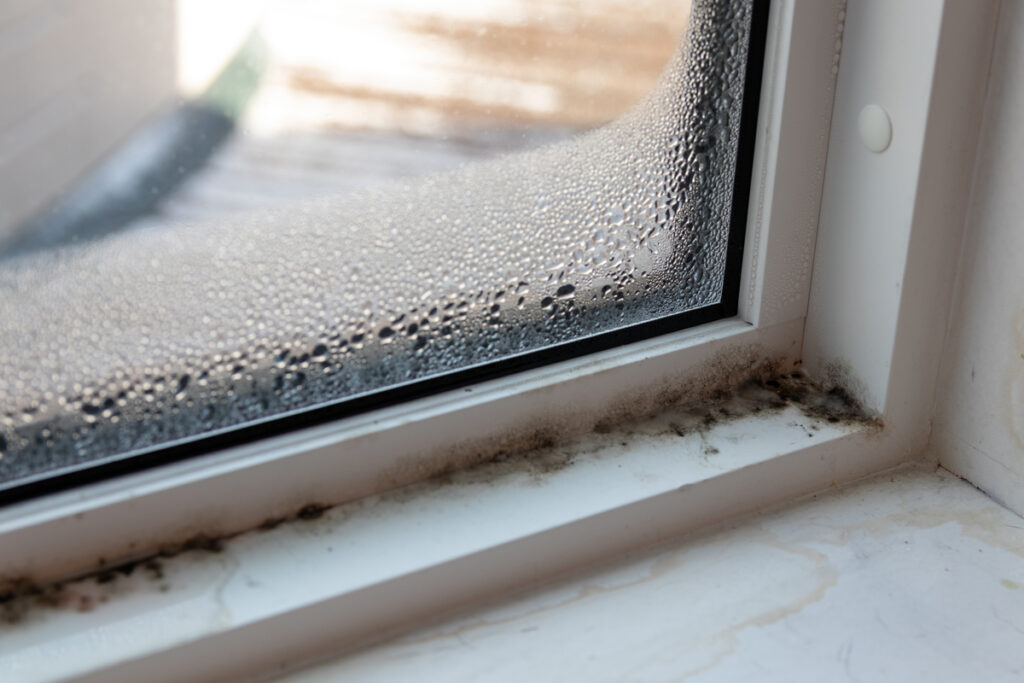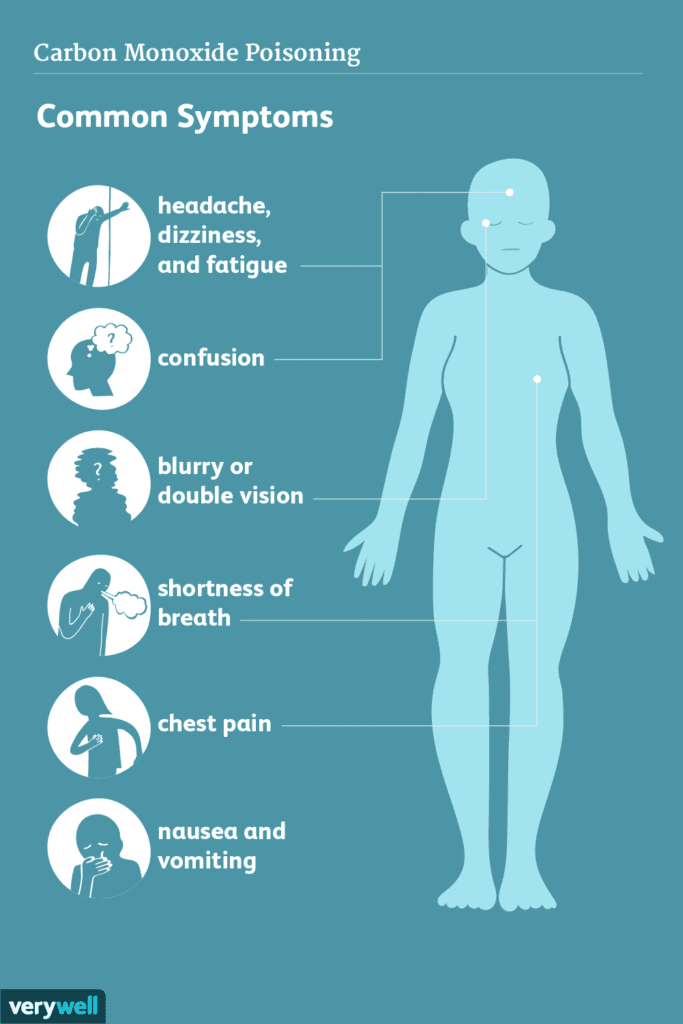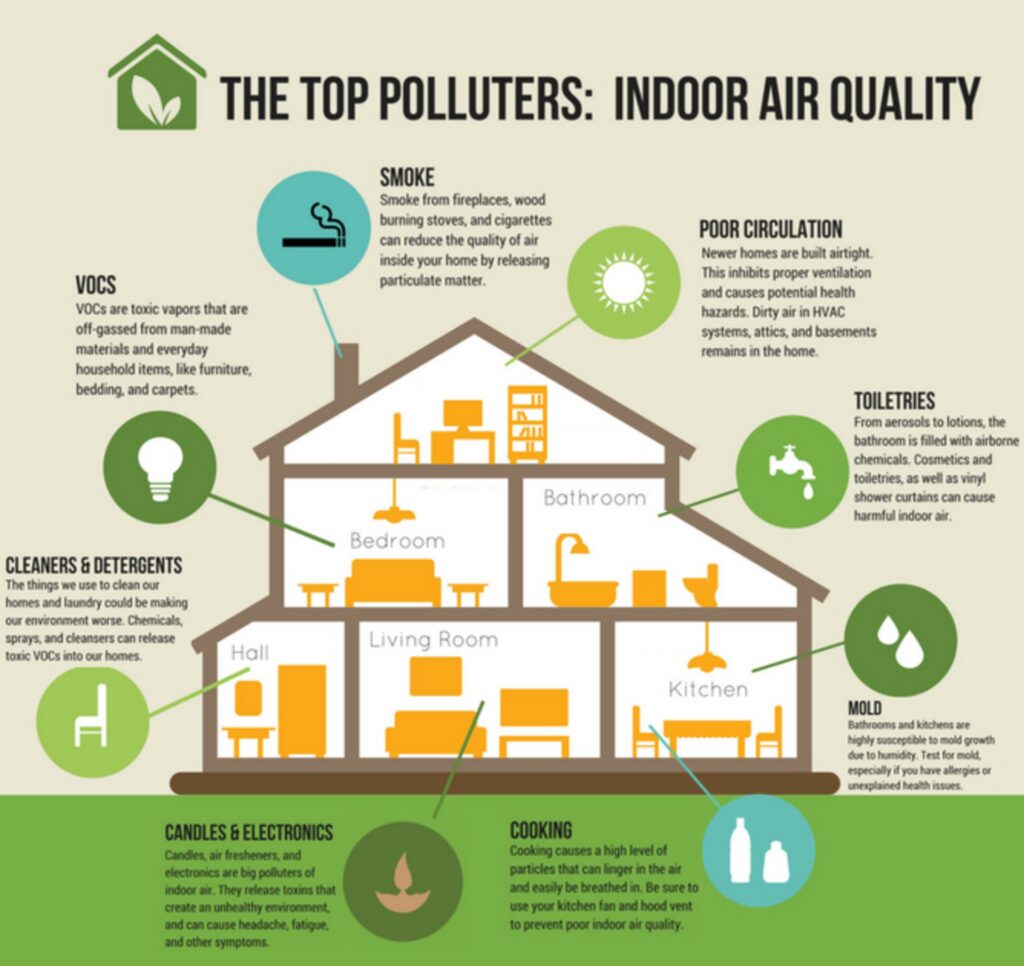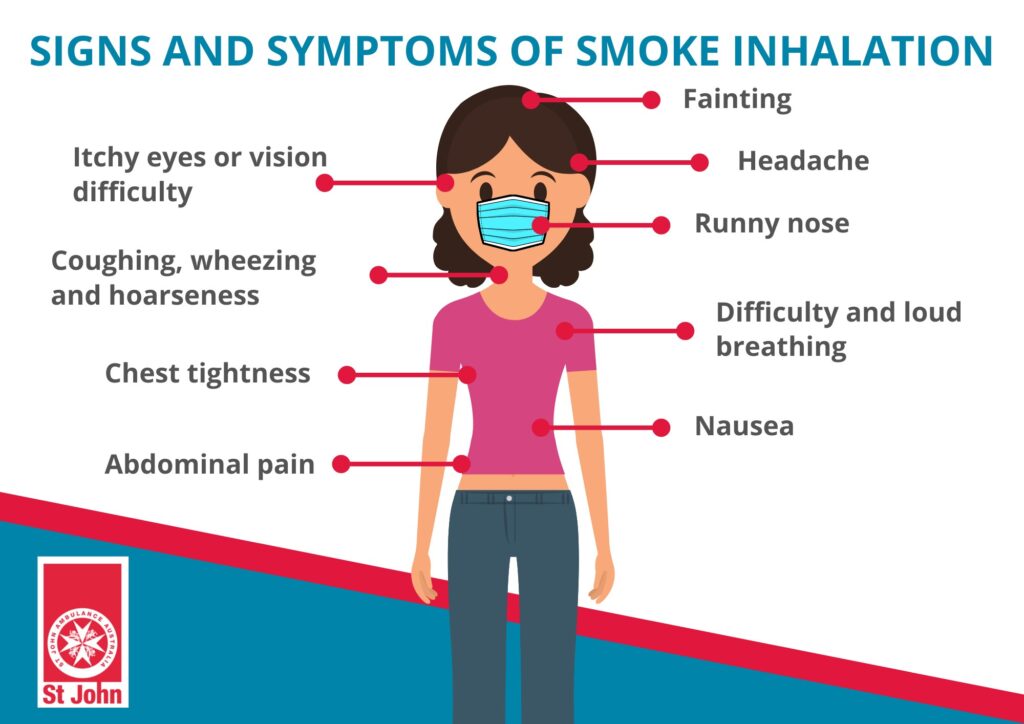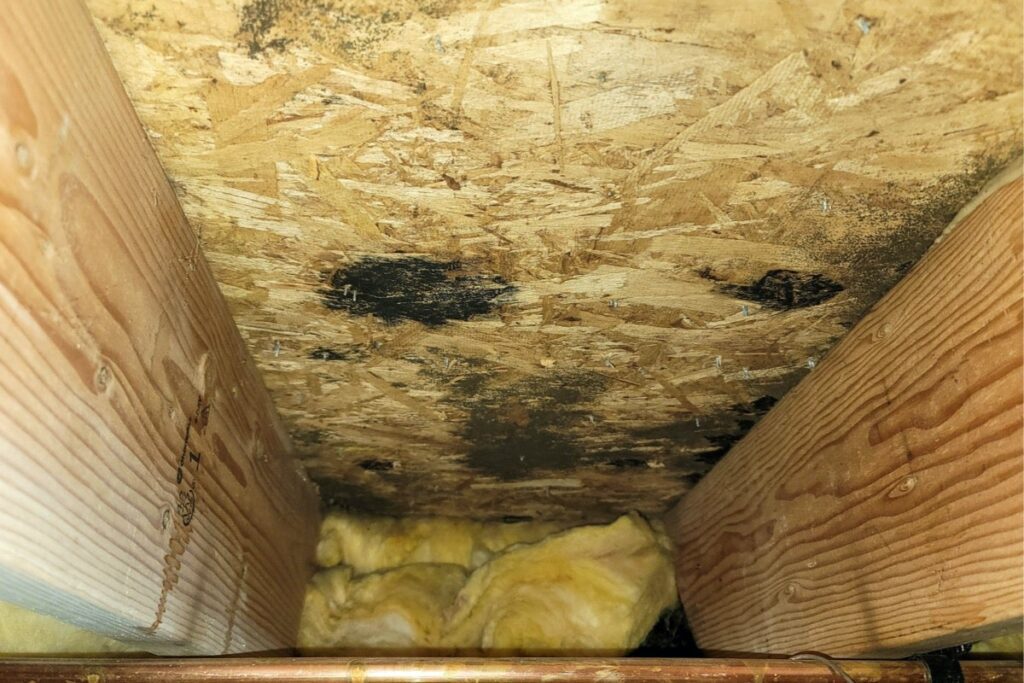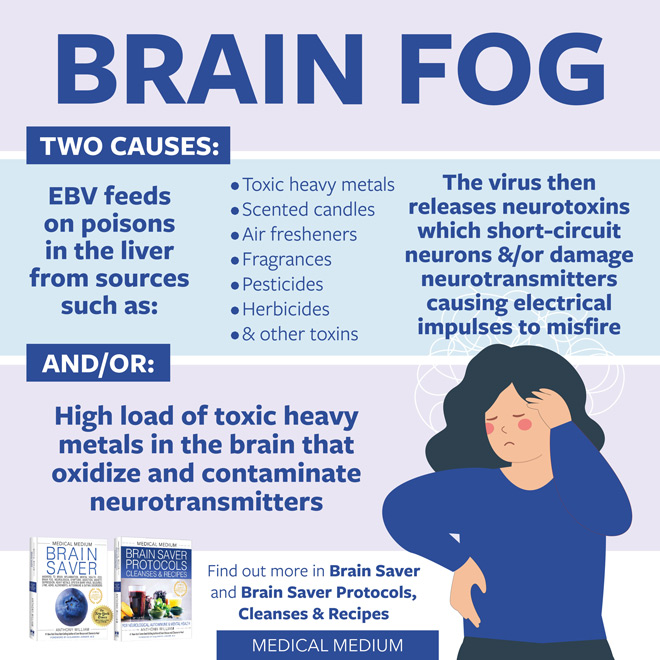Do you know if the air in your room is clean and healthy? Poor indoor air quality can result in various health problems, including allergies, respiratory issues, and fatigue. It is, therefore, essential to be able to identify if your room air is bad to take proper preventive measures.
There are several signs of poor indoor air quality that you can look out for. Some of these signs include stuffy or odorous air, coughing or wheezing, and headaches or dizziness. Dust accumulation or mold growth on surfaces can also indicate poor indoor air quality.
Key Takeaways
- Poor indoor air quality can lead to health issues and discomfort.
- Common signs of poor indoor air quality include unpleasant odors, respiratory problems, and visible dust or mold accumulation.
- Identifying signs of bad indoor air quality is the first step towards maintaining clean and healthy air in your room.
Understanding Indoor Air Quality
Indoor air quality refers to the level of pollutants and allergens present in the air inside your room. Poor indoor air quality can have adverse effects on your health, ranging from mild symptoms to serious respiratory problems.
Some common symptoms of unhealthy room air include coughing, sneezing, fatigue, headaches, and watery eyes. If you experience any of these symptoms frequently, it might be an indicator of poor indoor air quality.
Other indicators of poor indoor air quality include unpleasant odors, visible dust accumulation, mold growth, and respiratory issues. If you notice any of these signs, it’s essential to take immediate action to improve the air quality in your room.


Recognizing the Signs of Bad Room Air
If you’re wondering whether the air in your room is healthy or not, there are several signs to look out for. The first thing to note is any visible signs of poor air quality. Dust accumulation on surfaces or mold growth in damp areas can all indicate that your room air is compromised. Other clues can be less obvious, such as unpleasant or musty odors, which could indicate the presence of stagnant air or mold.
Aside from these visual or olfactory indicators, it’s worth paying attention to any physical symptoms you may be experiencing. Respiratory issues such as coughing, wheezing, or shortness of breath can all be signs of unhealthy room air. You may also experience irritation of the eyes, nose, and throat, or allergies that are worse when indoors.
Furthermore, your intuition can play a role in recognizing bad room air. If you feel like the air in your room is stale or uncomfortable, it may be time to investigate further and see if there are any underlying issues.


The Importance of Ventilation
If you are wondering about ways to determine if your room air is polluted, one of the critical indicators of bad indoor air quality is inadequate ventilation. Having stagnant air with no circulation can lead to high levels of indoor air pollutants and, in turn, have negative impacts on your health. Therefore, ensuring proper ventilation is crucial to maintaining clean and healthy air in your room.
One of the simplest ways to detect bad indoor air quality is by checking the level of humidity in your room. High levels of humidity can cause mold growth, which can lead to respiratory problems and allergic reactions. You can use a hygrometer to measure the humidity level in your room. Ideally, the level should be between 30 to 50 percent.
You can also evaluate room air quality by examining your home’s ventilation system. Check if your ventilation system is bringing in fresh air from outside, and if it is functioning correctly. A properly functioning ventilation system should be able to remove stale air and pollutants and replace them with fresh clean air from outside. Moreover, ensure that vents and filters are clean and free from any visible dust or debris buildup.


The Importance of Regular Maintenance
Maintaining proper ventilation in your room requires regular maintenance to ensure your ventilation system is functioning correctly. Ways to detect bad indoor air quality include inspecting your vents and filters for blockages, replacing filters if necessary, and cleaning your air ducts. Regular cleaning can minimize the accumulation of indoor air pollutants and reduce the chances of respiratory issues or allergic reactions.
Additionally, you can improve indoor air quality by investing in air purifiers or indoor plants. Air purifiers can remove airborne allergens, while indoor plants can absorb pollutants such as benzene, formaldehyde, and trichloroethylene, converting them into oxygen.
Remember, identifying signs of poor indoor air quality and taking action to maintain good indoor air quality is crucial to your overall health and well-being. By following these preventive measures, you can ensure your room air is fresh, clean, and healthy.
Understanding Allergens and Pollutants
Indoor air quality can be affected by various allergens and pollutants, some of which can be harmful to your health. It’s essential to recognize the signs of contaminated room air and take preventive measures to improve indoor air quality in your room.
Common indicators of poor indoor air quality include respiratory issues, allergies, and unpleasant odors. Additionally, visible signs such as dust accumulation, mold growth, or water damage can signify unhealthy room air. Identifying these signs can help you take proactive steps to improve indoor air quality.
Several common allergens and pollutants can contribute to poor indoor air quality, including pet dander, dust mites, and volatile organic compounds (VOCs). Pet dander is a common allergen that can trigger asthma in some people, while dust mites thrive in humid environments and can cause respiratory problems. VOCs, commonly found in household items such as cleaning products, paint, or adhesives, can cause headaches, dizziness, and irritation of the eyes, nose, and throat.
Reducing sources of pollutants and proper ventilation can make a significant difference in improving indoor air quality. Regularly cleaning your room and investing in an air purifier or indoor plants can also help eliminate allergens and pollutants from the air.


Evaluating room air quality and seeking professional help can also be useful in determining the source of indoor air pollution. A qualified expert can conduct tests to assess the air quality in your room and recommend appropriate solutions to improve indoor air quality.
By understanding common allergens and pollutants and taking proactive steps to improve indoor air quality, you can create a safe and healthy environment in your room.
Testing Indoor Air Quality
To determine whether your room air is polluted, you may need to test indoor air quality. There are different methods and devices available for evaluating room air quality, ranging from simple DIY kits to more advanced professional tests.
One common way to test indoor air quality is to use an air quality monitor. These devices can measure various pollutants and contaminants in the air, such as particulate matter, carbon monoxide, volatile organic compounds (VOCs), and more. Some models can even track humidity levels and temperature, which can also affect indoor air quality.
If you suspect that your room air is contaminated with mold or other allergens, you may want to consider testing for specific particles. For example, mold testing kits can be used to detect mold spores in the air or on surfaces, while allergen test kits can identify the presence of pet dander, dust mites, or other common allergens.
While testing indoor air quality can provide valuable information about pollutants and contaminants, it may not always be necessary. If you notice signs of poor indoor air quality, such as unpleasant odors, respiratory issues, or visible dust accumulation, taking preventive measures can improve the air quality of your room. However, if you are unsure about the presence or extent of indoor air pollution, consulting with a qualified professional can offer more accurate insights and recommendations.


Common Health Issues Linked to Poor Air Quality
It is essential to be aware of the symptoms of unhealthy room air, as poor indoor air quality can lead to various health problems.
One of the most common indicators of poor indoor air is respiratory issues. If you experience chronic coughing, wheezing, or shortness of breath, it could be a sign that your room air is contaminated. Other symptoms to look out for include headaches, fatigue, and dizziness. If you notice that your symptoms improve when you leave the room or building, it is likely that you have poor indoor air quality.


Allergies can also be a significant issue when it comes to indoor air quality. Dust mites, pet dander, and mold spores are just a few of the common allergens that can cause a range of symptoms, such as sneezing, runny nose, and itchy eyes. If you notice that your allergy symptoms worsen when you’re indoors, it could be a sign of contaminated room air.
Overall, good indoor air quality is crucial for maintaining your health and well-being. If you notice any of these symptoms, it’s essential to take action to improve the air quality in your room.
The Importance of Preventive Measures for Improving Air Quality
If you have noticed some signs of poor indoor air quality, such as unusual odors, respiratory issues, or excess dust, it’s time to take action and improve your room air. Fortunately, there are several preventive measures you can take to help detect and identify bad indoor air quality:
- Regular cleaning: One of the best ways to prevent indoor air pollution is to keep your room clean and tidy. Use a vacuum cleaner with a HEPA filter to remove dust, pet hair, and other allergens from carpets, rugs, and furniture. Wipe surfaces with a damp cloth rather than using chemical cleaners that may release volatile organic compounds (VOCs).
- Proper ventilation: Make sure your room is well-ventilated by opening windows or using exhaust fans when cooking or taking a shower. Consider investing in an air purifier with a HEPA filter, especially if you live in an area with high outdoor pollution or have allergies or asthma.
- Reducing sources of pollutants: Identify and reduce sources of indoor air pollution, such as cigarette smoke, scented candles, or cleaning products with harsh chemicals. Consider using natural alternatives, such as essential oils or vinegar, instead.
- Investing in indoor plants: Certain indoor plants, such as spider plants or peace lilies, can help purify indoor air by absorbing pollutants and releasing oxygen. Just make sure to choose non-toxic plants if you have pets.
By taking these steps, you can improve indoor air quality and reduce the risk of health issues associated with breathing in contaminated air.
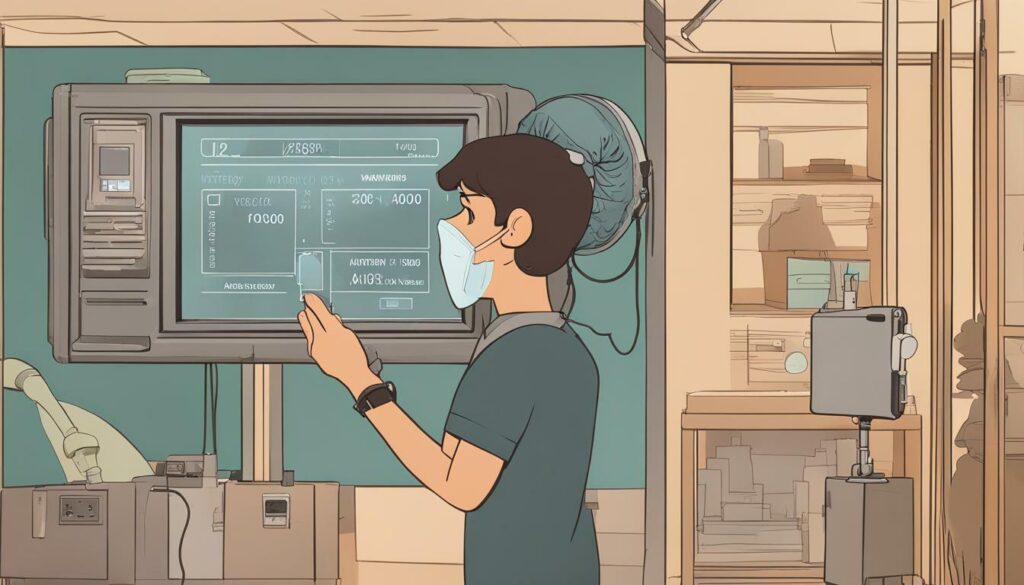

The Importance of Maintenance and Regular Cleaning
To ensure that your indoor air quality remains healthy, regular maintenance and cleaning are essential. By keeping your room clean and well-ventilated, you can prevent the buildup of pollutants that can negatively impact your health. Here are some tips to help you detect and recognize unhealthy room air:
- Regular Dusting: Dust is a common allergen that can contribute to poor indoor air quality. Dust your room regularly to prevent it from accumulating on surfaces.
- Clean Air Filters: If you have an HVAC system, clean or replace your air filter regularly. A dirty air filter can reduce the efficiency of your system and circulate pollutants throughout your room.
- Control Humidity: High humidity levels can promote the growth of mold and mildew, which can negatively impact your indoor air quality. Use a dehumidifier to keep humidity levels in check.
- Remove Clutter: Clutter can collect dust and other pollutants, so it’s essential to keep your room tidy and free of unnecessary items.
By following these maintenance and cleaning tips, you can recognize and detect bad room air before it affects your health. Remember, prevention is key to maintaining good indoor air quality.
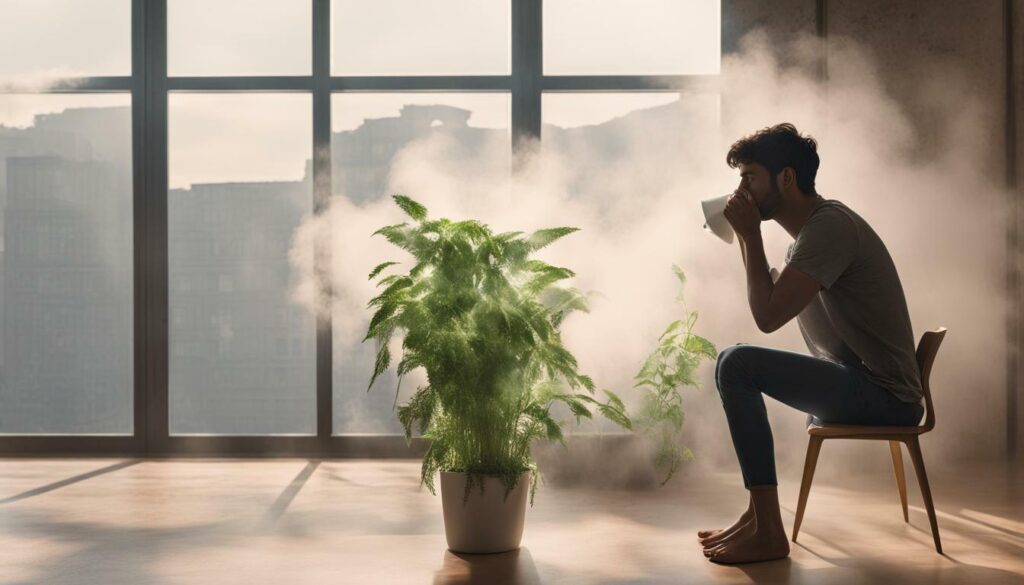

Regular maintenance and cleaning are key to ensuring that your indoor air quality is healthy and safe. By taking proactive steps to detect and recognize unhealthy room air, you can breathe easy and enjoy a cleaner, healthier living environment.
Seeking Professional Help
If you have tried all the DIY methods to improve your indoor air quality and still experience signs of contaminated room air or suspect that your room air quality needs to be evaluated professionally, it may be time to seek expert help.
Professional air quality assessments can help identify specific pollutants or allergens that may be present in your room air and provide recommendations for improvement. Qualified experts can also conduct tests and inspections to determine the source of the problem, whether it’s poor ventilation, mold growth, or other factors.
When evaluating room air quality experts, look for professionals who are well-versed in indoor air quality and have experience in testing and improving air quality in homes and workplaces. You can check for certifications and accreditations, read online reviews, and ask for referrals from friends or family members.
Remember, taking care of your indoor air quality is crucial to maintaining your health and well-being. Seek professional help if you suspect your room air is contaminated and take proactive steps to ensure a healthy living environment for you and your loved ones.


The Importance of Being Vigilant About Indoor Air Quality
Ensuring that your indoor air is fresh, clean, and healthy is crucial for your well-being. By identifying the signs of poor air quality and taking proactive steps to improve it, you can prevent or minimize the potential health effects of breathing in contaminated air.
Remember that poor indoor air quality can lead to respiratory issues, allergies, and other health problems. Therefore, it is essential to maintain good air quality by understanding the common causes of indoor air pollution and taking preventive measures to reduce it.
Regular cleaning, proper ventilation, reducing sources of pollutants, and investing in air purifiers or indoor plants are practical steps you can take to improve indoor air quality. Additionally, seeking professional help when necessary can also ensure that your room air is clean and healthy.
Conclusion:
Don’t underestimate the importance of good indoor air quality. By being vigilant and taking steps to maintain clean air in your room, you can significantly improve your quality of life and reduce the risk of health problems associated with poor air quality.
FAQ
Q: How do you know if your room air is bad?
A: Signs of poor indoor air quality can include symptoms such as frequent headaches, coughing, sneezing, or itchy eyes. Additionally, if you notice a musty or unpleasant odor in your room, that could be an indication of bad air quality.
Q: What are the symptoms of unhealthy room air?
A: Symptoms of unhealthy room air can vary but commonly include respiratory issues, allergies, frequent illnesses, and fatigue. If you or your family members experience these symptoms consistently when indoors, it may be a sign of poor indoor air quality.
Q: How can you detect bad indoor air quality?
A: There are several indicators of poor indoor air quality. Visible signs such as dust accumulation, visible mold growth, or excessive humidity are red flags. Unpleasant odors or a stuffy, stale feeling in your room can also suggest bad air quality. Respiratory issues that improve when you leave the room may also be a sign of contaminated air.
Q: What is the importance of ventilation in maintaining good indoor air quality?
A: Proper ventilation is crucial for maintaining good indoor air quality. It helps remove stale air and pollutants while bringing in fresh outdoor air. Insufficient ventilation can lead to a buildup of harmful pollutants and allergens in your room.
Q: What are common allergens and pollutants that can affect indoor air quality?
A: Common allergens and pollutants that can impact indoor air quality include pet dander, dust mites, pollen, mold spores, and volatile organic compounds (VOCs) emitted by cleaning products, paints, or building materials.
Q: How can you evaluate room air quality?
A: Testing indoor air quality can be done using various methods and devices, including air quality monitors or professional testing services. These tests can provide detailed information about the presence of pollutants, humidity levels, and other factors that affect air quality.
Q: What are some health issues linked to poor air quality?
A: Breathing in bad room air can contribute to respiratory issues such as asthma, allergies, and bronchitis. It can also lead to headaches, fatigue, and overall reduced well-being.
Q: What preventive measures can you take to improve air quality?
A: To improve indoor air quality, you can adopt several preventive measures. These include regular cleaning and dusting, proper ventilation, minimizing the use of harsh chemicals, reducing indoor humidity levels, and investing in air purifiers or indoor plants that can naturally filter the air.
Q: How important is maintenance and regular cleaning for maintaining good air quality?
A: Regular maintenance and cleaning routines are essential for maintaining good air quality in your room. Dusting, vacuuming, and properly maintaining HVAC systems can help remove pollutants and minimize their buildup over time.
Q: When should you seek professional help for indoor air quality issues?
A: If you have persistent air quality issues, or if you suspect there may be significant pollutants or contaminants in your room air, it’s advisable to seek professional help. Qualified experts can assess the situation, conduct thorough testing, and provide specific recommendations to improve indoor air quality.
Q: What is the conclusion about indoor air quality?
A: It is crucial to be aware of and proactive about maintaining good indoor air quality. By recognizing the signs of bad room air, understanding the importance of ventilation, and implementing preventive measures, you can ensure that your room air is fresh, clean, and healthy for you and your family.


